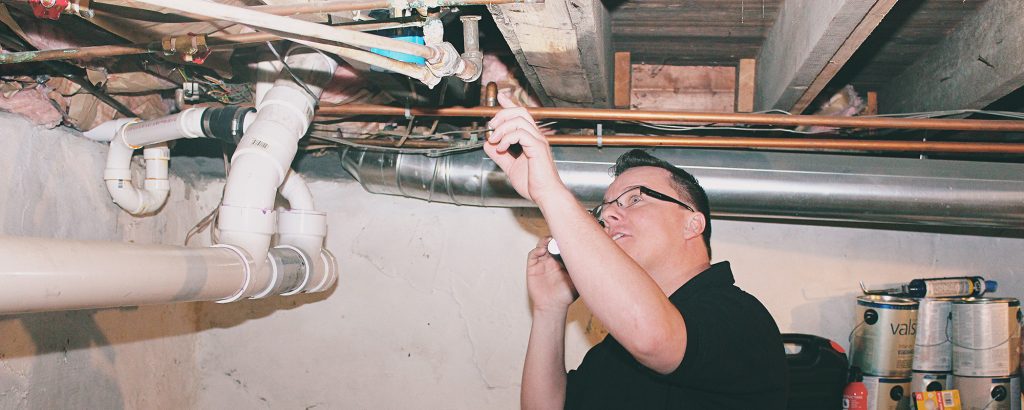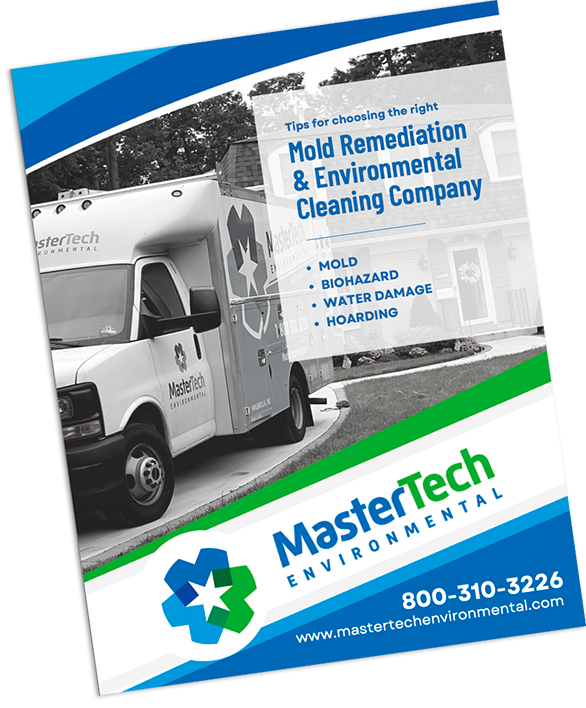The Cause of Moldy Floor Joists
Many New Jersey homeowners are aware that our basements can be prone to poor ventilation, excess moisture and mold. However, an area that is often overlooked is the subfloor, as well as the floor joists. Your home’s floor joists, sometimes referred to as the “basement ceiling,” can hold much more moisture damage than other areas of the basement. It happens all the time in unfinished basements. The foundation walls and floor joists are exposed, leaving them more vulnerable than that of a finished basement.
The average subfloor and floor joist is made of wood, which is a porous building material able to hold a lot more moisture than foundation walls, which are generally made from cement. Compared to other areas of the home, basements tend to harbor more moisture due to poor ventilation.
Moldy floor joists can be caused by excess humidity, leakage that has seeped from upper levels of the home, and condensation, among other things. The good news is that moldy floor joists can usually be effectively remediated without having to be completely removed.
Removing Mold From Floor Joists & Subfloor
Once moisture is introduced to the floor joists and surrounding areas, mold will develop rapidly. Mold is opportunistic, and can spread as quickly as 24 to 48 hours after moisture is introduced. While there are certain conditions that mold thrives more in, moisture is really the only thing it needs to survive.
If your basement is experiencing excess moisture via humidity, improper ventilation, or previous water damage, you should be checking your floor joists for mold. If you have determined that there is in fact mold on your floor joists, contact a professional mold remediation company in your area to schedule a remediation. MasterTech Environmental covers the state of New Jersey and can help NJ homeowners with mold inspection, mold testing and mold removal services.

The Mold Remediation Process
Mold remediation is not a DIY project. It requires specialized removal equipment, as well as extensive training. Regardless of the extent of the damage mold has caused, remediation should always be left to the professionals. A professional mold remediation company will ensure that your home is restored to previously mold-free conditions in a safe and effective manner. A professional remediation of moldy floor joists should include:
- Containment: Basement and floor joists will be properly contained and all floors and contents present in the area will be covered and protected. Containment helps to prevent cross-contamination, ensuring that mold doesn’t spread to unaffected areas of the property.
- HEPA Filter: HEPA filtered air filtration protects the indoor air quality during remediation. The HEPA filter keeps air circulating and filtered throughout remediation, bringing in clean air and forcing out contaminated air.
- HEPA Vacuum: The use of HEPA vacuums is employed to remove surface mold spores from contaminated areas before more heavy duty cleaning agents are applied.
- Antimicrobial: An antimicrobial cleaning agent is used in conjunction with the HEPA vacuum, cleaning the surface mold from the affected floor joists.
- Cleaning Agents: A concentrated hydrogen peroxide solution is applied to the floor joists. This reaches deep beneath the surface of the moldy floor joists, removing the mold at its roots. The solution bubbles up when mold is present. When it stops bubbling up, it means that there is no more mold present. This process is repeated until the bubbling stops and the area is free of mold.
- Scrubbing: Following the application of the cleaning agents, floor joists are thoroughly scrubbed and wiped down for good measure. This ensures that there are no mold spores left behind on the surface of the floor joists.
- Re-HEPA Vacuuming: Another round of HEPA vacuuming ensures that no mold spores were missed during the remediation process.
- Mold-Resistant Coating: The final step of the remediation process is to apply a mold-resistant coating to the floor joists. This prevents mold from returning in the future.
In a perfect world, you would simply prevent moldy floor joists before they occur in the first place. However, that will not always be the case. The number one thing you can do to prevent mold from recurring on floor joists is moisture control. Employing the use of proper ventilation can go a long way, but may not do the trick entirely. You may need to consider the use of a dehumidifier to minimize moisture in this area as much as possible. Ideal humidity levels in any area of your home, basement included, is between 35% and 50%.
In the event of unexpected water damage such as a leak or flood, time is of the essence. As stated prior, mold can develop very rapidly when moisture is introduced to the area. In order to minimize damage as much as possible, contact a professional mold remediation company in your area to take care of your home’s moldy floor joists and basement ASAP.



